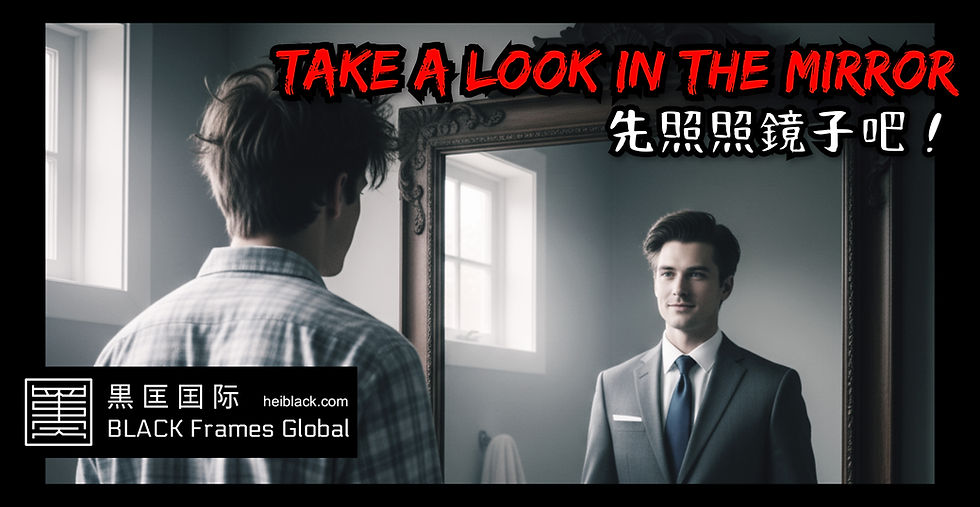Green Book: A Journey Toward Peace Through Understanding
- Bruno Huang 黃鼎翰 / 老黑

- 6月3日
- 讀畢需時 5 分鐘
已更新:6月9日
電影 《幸福綠皮書》 :從一段公路旅程,看見和平的可能
The 91st Academy Awards Best Picture, Green Book, is far more than a story about an unlikely friendship that crosses racial boundaries. It acts as a mirror, reflecting the deep-rooted prejudices and divisions that still echo in our modern world. Set in 1960s America, the film follows a rough-edged Italian-American driver, Tony, and a refined, soft-spoken African-American pianist, Don Shirley, as they embark on a music tour through the racially segregated Deep South.
第91屆奧斯卡金像獎最佳影片 《Green Book》,並不只是講述一段跨越種族鴻溝的友誼,更像是一面鏡子,映照出我們至今仍未解決的偏見與隔閡。故事發生在1960年代的美國,一名粗獷直率的白人司機Tony,與一位高雅寡言的黑人鋼琴家Don Shirley,共同展開一場從北到南的音樂巡演之旅。

Their backgrounds, habits, and worldviews couldn’t be more different. Yet, through countless misunderstandings, tensions, and moments of danger, a bond slowly forms between them. What begins as a business arrangement gradually becomes a journey of mutual transformation. Green Book serves as more than a tale of friendship—it is a metaphor for the power of understanding. During an era when racial segregation still shaped much of American society, Don Shirley’s brilliance couldn’t shield him from injustice. And Tony, initially holding casual prejudices, begins to shift his view—not because he’s forced to, but because he starts to understand.
他們的出身、習慣、價值觀截然不同,但在經歷種種誤解、衝突與風險後,彼此的心也慢慢靠近。這段公路旅程不只是一段友情的形成過程,更象徵著理解與改變的契機。在美國種族隔離制度尚未被完全推翻的年代,Don Shirley的才華無法遮掩他在社會上所遭遇的不公平對待;而Tony則從原本對黑人懷有偏見,到最後甘願為朋友挺身而出,甚至違背當時社會習慣,只因他「開始懂了」。

Understanding Before Acceptance
Discrimination doesn’t always stem from hatred—it often comes from ignorance. And the cure for ignorance is connection. True understanding happens not through lectures, but through shared experiences.
Tony offers Don his first taste of fried chicken, defends him in tense confrontations, seemingly trivial acts that slowly build trust. Don, in return, responds with grace, culture, and dignity. Shattering Tony’s stereotypes not through confrontation, but through presence. 沒有理解,就沒有包容
美國數十年來的種族歧視,從法律制度到文化刻板印象,根深蒂固。然而正如《Green Book》所傳達的訊息:歧視不一定來自邪惡,而常常是源自於不了解。而了解,正是需要「相處」來實現。
Tony 在旅途中逼Don吃炸雞、為他辯護,這些看似小事的互動,其實就是彼此建立信任的過程。而Don則用音樂、風度與沉穩回應Tony的粗魯與不解,最終讓Tony看見了一個不同於偏見中的黑人。

A Microcosm of Global Division
What unfolds between Tony and Don mirrors many of today’s global conflicts. Nations clash, not always because of incompatible ideologies, but because of a lack of dialogue. When cultures, languages, and behaviors become symbols of “the other,” fear and hostility are easily amplified—especially by those who benefit from division.
From U.S.-China tensions and the war in Ukraine, to ongoing religious strife in the Middle East and cross-strait relations between Taiwan and China, we often find that the most persistent conflicts are not born from irreconcilable differences—but from a refusal to understand. Misused “differences” become tools of control, while shared humanity is ignored.
Just like in Green Book, many conflicts are manipulated by those who profit from fear. These actors exploit our discomfort with the unfamiliar, stoking division and resentment. But when we take the time to truly engage with others, we find that many so-called oppositions are complementary.
被誤用的「分歧」,與被遺忘的「共通點」
這也正是現今世界多數衝突的縮影。許多國家之間的對立,不完全是因為理念不可共存,而是因為彼此沒有真正對話。當對方的文化、語言與行為模式成了「他者」的象徵,我們很容易被恐懼、仇恨與不實訊息煽動,而選擇劃清界線,甚至引發衝突。
從美中關係、俄烏戰爭、兩岸關係,到中東長期的宗教衝突,我們發現,許多衝突其實是被少數利益者刻意放大。這些人善用人們對於「不同」的恐懼,製造敵意、撕裂族群。
但正如Tony與Don的故事告訴我們的:當我們願意多花時間了解彼此,就會發現許多看似矛盾的地方,其實可以互補。
Had Don not repeatedly demonstrated his character and talent during their journey, Tony might never have overcome his inner biases. And if Tony hadn’t offered protection and companionship, Don would never have been able to perform in hostile environments or enter segregated restaurants. Their story proves that understanding isn’t decreed—it’s built, through shared time, respect, and empathy.
如果Don不是在旅途中一次次展現他的品格與才華,Tony就不會願意為他打破內心的成見;如果Tony沒有持續保護與陪伴,Don也不可能有機會在當時的南方演出,甚至走入白人餐廳。這就是「人與人之間理解的力量」——它不是靠命令或協議建立,而是透過相處與尊重自然生成的。

The SDGs Vision: Understanding Over Conflict
The United Nations’ Sustainable Development Goals (SDGs) capture this philosophy, particularly Goal 16: Peace, Justice, and Strong Institutions. It’s not just about law and order—it’s about building inclusive societies through education, dialogue, and intercultural exchange.
This is precisely the moral heartbeat of Green Book: that peace is only possible when we are willing to truly listen. When we stop viewing others as categories or threats, and instead seek to know their stories, we create bridges where there were once only walls.
Peace isn’t about one side surrendering—it’s about both sides stepping forward to meet in the middle. It’s about cooperation, not conquest.
SDGs的共識:用理解替代對立
聯合國永續發展目標(SDGs)中,第16項強調「和平、正義與有力的制度」(Peace, Justice and Strong Institutions)。它不僅關注制度建設,更強調如何透過社會參與、教育、與多元文化的交流來促進和平。這也是《Green Book》最觸動人心的核心精神:當我們願意彼此傾聽,了解背後的故事,就能在看似不可跨越的分歧中找到共同的道路。
和平,從來不是一方退讓,而是彼此願意各退一步,走向一個雙方都能共存的交會點。

From a Road Trip to a Global Message
Though Green Book is set in the 1960s, its message is urgently relevant today. No matter where we come from or what we believe, we all face the same challenge: how to find connection in difference, and meaning in misunderstanding. What the world needs isn’t more borders and barricades—but more meals shared, more conversations had, more journeys taken together.
In the end, it’s not policies or weapons that change the world—it’s how we choose to see one another. From prejudice to empathy. From conflict to peace. 從一趟旅程,到世界的縮影
《Green Book》或許是一部關於1960年代的電影,但它的意義卻是對當代的警醒。無論我們來自哪個國家、擁抱什麼信仰,最終都要學會在差異中尋找理解,在誤解中創造連結。世界不需要更多的界線與牆,而需要更多能坐下來好好吃一頓飯、聊一場天的機會。
畢竟,真正能改變世界的,不是政策,也不是軍事,而是我們看待彼此的方式——從偏見,轉為理解;從對立,走向和平。

原文(中文):Bruno Huang
翻譯(英文):Bruno Huang
.jpg)





留言